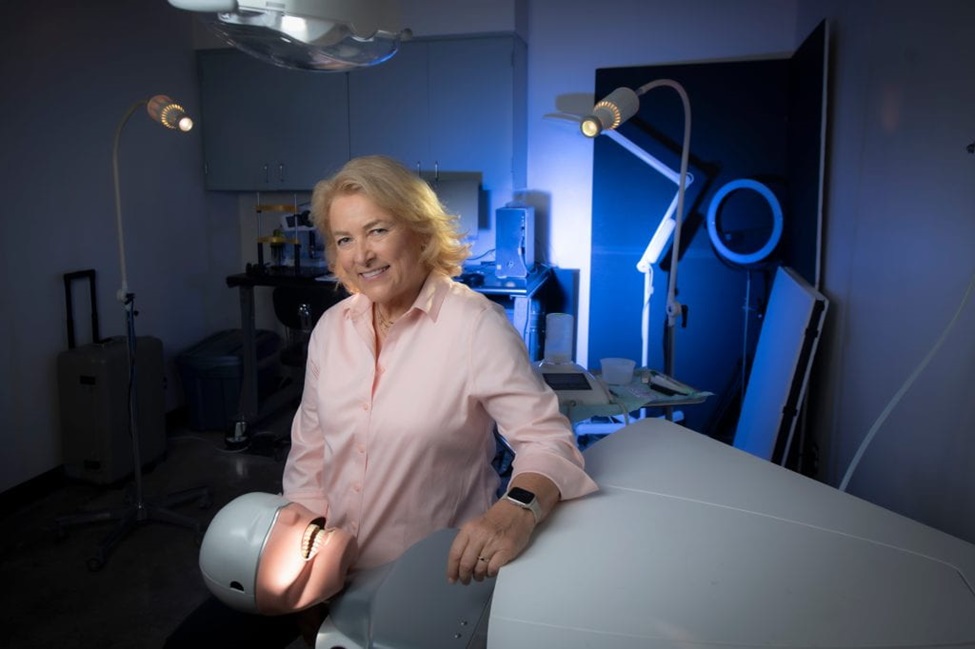Intraoral Camera for Cancer Screening Eliminates Guesswork in Interpreting Clinical Findings
|
By HospiMedica International staff writers Posted on 24 Jul 2024 |

Currently, oral cancer detection typically involves a visual examination and palpation by a healthcare professional to identify and assess any suspicious lesions. Oral cancer lesions vary widely in appearance, which makes them challenging to detect. Once a potential cancerous lesion is identified, a biopsy is necessary to plan appropriate treatment, targeting the most aggressive part of the lesion for sampling. Now, a commercial intraoral camera with the ability to screen for cancer could rewrite oral and oropharyngeal cancer outcomes.
Intraoral cameras are one of the most useful and versatile diagnostic tools used in the field of dentistry. Shaped like a pen and covered with a disposable sheath to prevent cross-contamination, these cameras are inserted into the patient's mouth and maneuvered to capture detailed images of each tooth. These images are then displayed on a television screen in a video format, allowing for playback control and detailed examination of specific areas. One of the key benefits of intraoral cameras is that they do not subject patients to any radiation exposure.
A new intraoral camera designed for cancer detection at the UCI Health Beckman Laser Institute & Medical Clinic (Irvine, CA, USA) represents a significant breakthrough in technology with considerable commercial potential and the promise of substantial public health benefits. Clinical tests have demonstrated that this new camera can increase the accuracy of detecting oral cancer from the typical 40-60% to an impressive 87-93%. This device enhances the precision of clinical assessments, facilitating earlier diagnoses and potentially improving treatment outcomes. To date, ten prototypes of the camera have been developed, including a smartphone-compatible model designed as a phone case that connects to the intraoral camera to visualize lesions. The most recent prototype is undergoing final testing and algorithm adjustments before moving forward with manufacturing considerations.
“Quite simply, my goal is to improve oral cancer outcomes, because it’s the only major cancer whose outcomes are still getting worse,” said Dr. Petra Wilder-Smith, the director of dentistry at UC Irvine’s Beckman Laser Institute & Medical Clinic, who developed the intraoral camera in collaboration with the University of Arizona’s Wyant College of Optical Sciences.
Related Links:
UCI Health Beckman Laser Institute & Medical Clinic
Latest Critical Care News
- Novel Intrabronchial Method Delivers Cell Therapies in Critically Ill Patients on External Lung Support
- Generative AI Technology Detects Heart Disease Earlier Than Conventional Methods
- Wearable Technology Predicts Cardiovascular Risk by Continuously Monitoring Heart Rate Recovery
- Wearable Health Monitoring Device Measures Gases Emitted from and Absorbed by Skin
- Groundbreaking Technology Rapidly Detects Airborne Influenza Viruses
- Handheld Device Could Transform Heart Disease Screening
- Flexible Semi-Autonomous Robot Could Deliver Medicine Inside Body

- Neurorestorative Treatment Strategies Hold Promise for Most Severe Forms of Epilepsy
- Gene Discovery Could Help Grow New Heart Arteries
- Study Discovers Invisible Transmission of Common Hospital-Associated Infection
- Non-Invasive Neuro-Ophthalmology Techniques Could Detect Brain Tumors Earlier
- Mass Manufactured Nanoparticles to Deliver Cancer Drugs Directly to Tumors
- World’s Smallest Pacemaker Fits Inside Syringe Tip

- AI-Powered, Internet-Connected Medical Devices to Revolutionize Healthcare, Finds Study
- Starfish-Inspired Wearable Tech Enables Smarter Heart Monitoring
- AI Eye Scans Could Help Identify Heart Disease and Stroke Risk
Channels
Surgical Techniques
view channel
Intravascular Imaging for Guiding Stent Implantation Ensures Safer Stenting Procedures
Patients diagnosed with coronary artery disease, which is caused by plaque accumulation within the arteries leading to chest pain, shortness of breath, and potential heart attacks, frequently undergo percutaneous... Read more
World's First AI Surgical Guidance Platform Allows Surgeons to Measure Success in Real-Time
Surgeons have always faced challenges in measuring their progress toward surgical goals during procedures. Traditionally, obtaining measurements required stepping out of the sterile environment to perform... Read morePatient Care
view channel
Portable Biosensor Platform to Reduce Hospital-Acquired Infections
Approximately 4 million patients in the European Union acquire healthcare-associated infections (HAIs) or nosocomial infections each year, with around 37,000 deaths directly resulting from these infections,... Read moreFirst-Of-Its-Kind Portable Germicidal Light Technology Disinfects High-Touch Clinical Surfaces in Seconds
Reducing healthcare-acquired infections (HAIs) remains a pressing issue within global healthcare systems. In the United States alone, 1.7 million patients contract HAIs annually, leading to approximately... Read more
Surgical Capacity Optimization Solution Helps Hospitals Boost OR Utilization
An innovative solution has the capability to transform surgical capacity utilization by targeting the root cause of surgical block time inefficiencies. Fujitsu Limited’s (Tokyo, Japan) Surgical Capacity... Read more
Game-Changing Innovation in Surgical Instrument Sterilization Significantly Improves OR Throughput
A groundbreaking innovation enables hospitals to significantly improve instrument processing time and throughput in operating rooms (ORs) and sterile processing departments. Turbett Surgical, Inc.... Read moreHealth IT
view channel
Printable Molecule-Selective Nanoparticles Enable Mass Production of Wearable Biosensors
The future of medicine is likely to focus on the personalization of healthcare—understanding exactly what an individual requires and delivering the appropriate combination of nutrients, metabolites, and... Read more
Smartwatches Could Detect Congestive Heart Failure
Diagnosing congestive heart failure (CHF) typically requires expensive and time-consuming imaging techniques like echocardiography, also known as cardiac ultrasound. Previously, detecting CHF by analyzing... Read moreBusiness
view channel
Expanded Collaboration to Transform OR Technology Through AI and Automation
The expansion of an existing collaboration between three leading companies aims to develop artificial intelligence (AI)-driven solutions for smart operating rooms with sophisticated monitoring and automation.... Read more

















